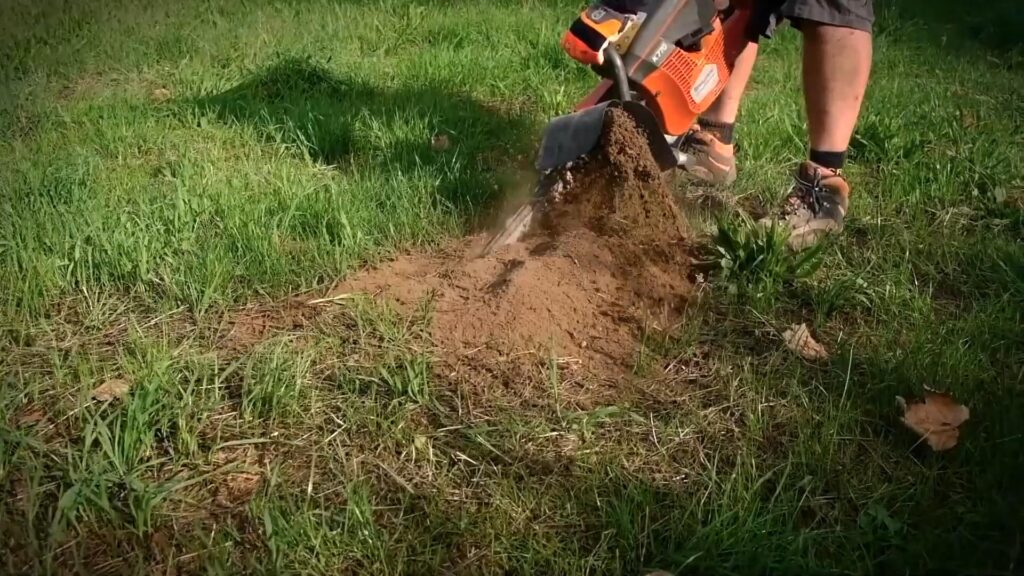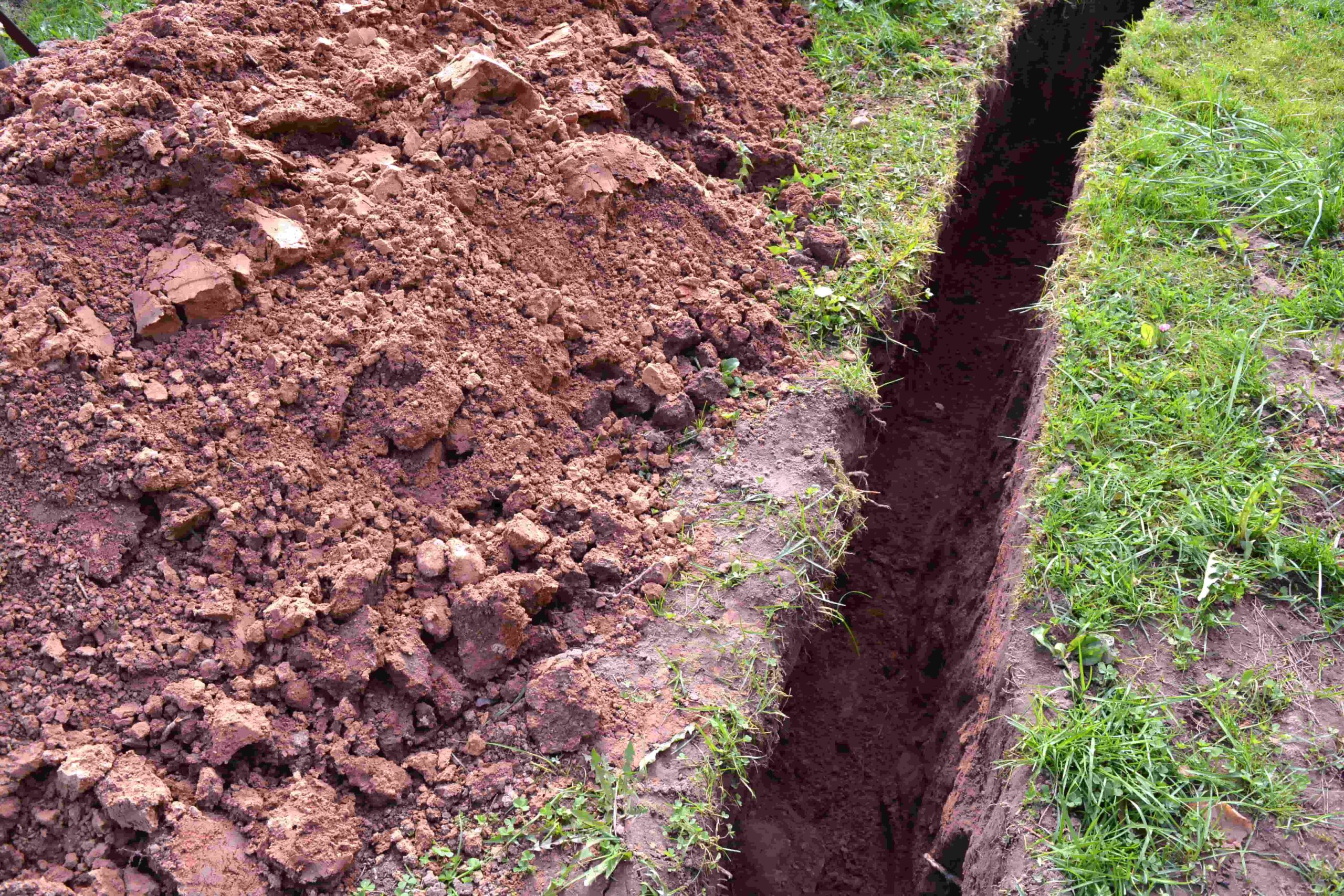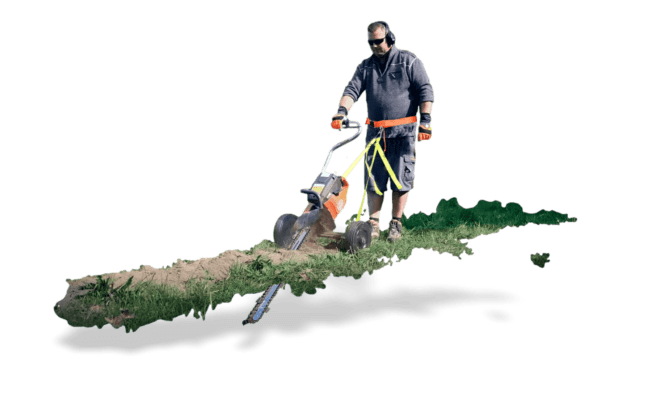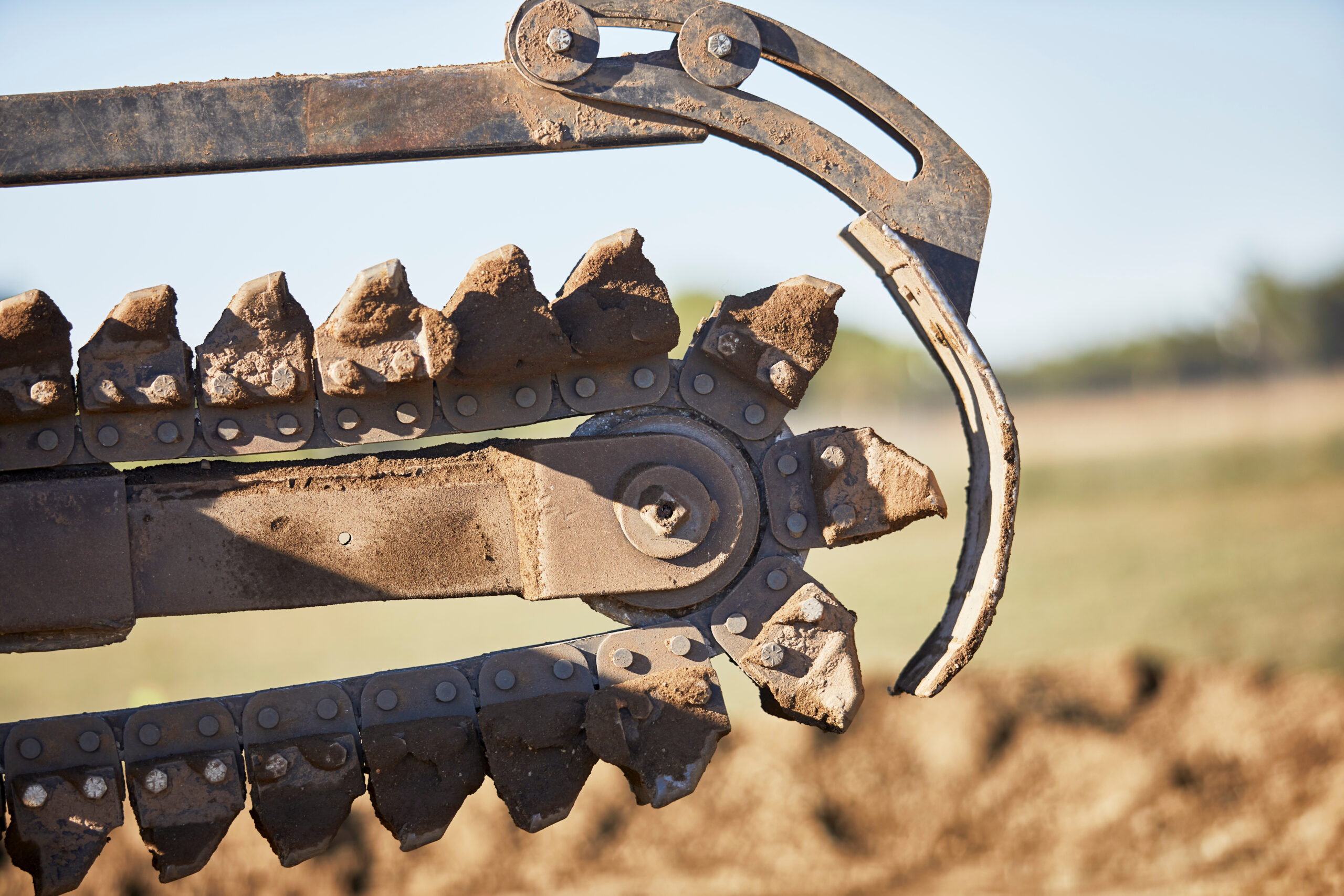Which Jobs Use Trenchers Most?
Though the primary purpose of a trencher, no matter the type, is to move earth and create a smooth trench, there are lots of different ways this might happen. For instance, you might need to remove pavement, or you may need to use your trencher to create a ditch for drainage. These scenarios can call for a different kind of trencher.
1. Cutting Pavement
If you need to cut through rock, concrete, or pavement, then a wheel trencher is probably going to be your best bet. Wheel trenchers have a large, toothed metal wheel on the front that can cut at varying depths through both soft and hard soil as well as rock and concrete. Wheel trenchers also allow you to push excavated materials to the side using spacers and ejectors. These trenchers are ideal for roadway repairs and excavation.
Similarly, micro trenchers, often referred to as “small rockwheels,” are most often used in urban settings to reduce traffic disturbances while creating mini trenches for laying fibre optic cables. Micro trenchers are fitted with a small cutting wheel designed to dig these small, narrow trenches.
2. Creating Drainage
If you need to dig a drainage trench to manage water or sewage runoff, then a chain trencher can do the job quickly and easily. Chain trenchers are usually portable and are best for cutting narrow trenches that run between 12 and 36 inches deep.
Chain trenchers allow you to remove smaller amounts of earth for running irrigation lines underground. The belt wraps around a metal frame, also called a boom, and you can easily adjust it to control the depth of the cut.
3. Digging for Electrical Wires
A chain trencher allows you to dig a trench for installing your electrical cables or telecom wires. The trencher’s conveyor belt removes the excavated materials, which means that you can spend less time working on the trench and more time tending to the installation of the wires.
4. Piping Work
Very much like using a trencher to create an underground pathway for your electrical or telecom wires, you can also use a chain trencher to dig a space for water and sewage piping. The key is to dig deep enough to protect the pipes — and any humans or animals that may try to reach them.

5. Shoveling
Small walk-behind trenchers, or portable trenchers, are great for digging trenches that are just 3 to 4 feet deep. If you have a home improvement project that calls for some intense digging, such as an ambitious landscaping project, a walk-behind trencher will likely be money very well spent, since walk-behind trenchers are lighter and more compact than most other types of trenchers.
6. Snipping Roots
Dealing with thick tree roots can be just as much of a headache as trying to demo rock, concrete, and pavement. Portable trenchers have a blade on the end that allows them to function a lot like a rotary lawnmower blade, enabling you to slice through roots quickly and easily.
If you encounter roots while working the soil, hold the trencher’s chain blade in place while the blade spins. Slowly inch the blade forward and let the blade cut through the roots.
If you have more questions
Visit our site for more information, or alternatively, you can go straight to our UK shop to start browsing.




